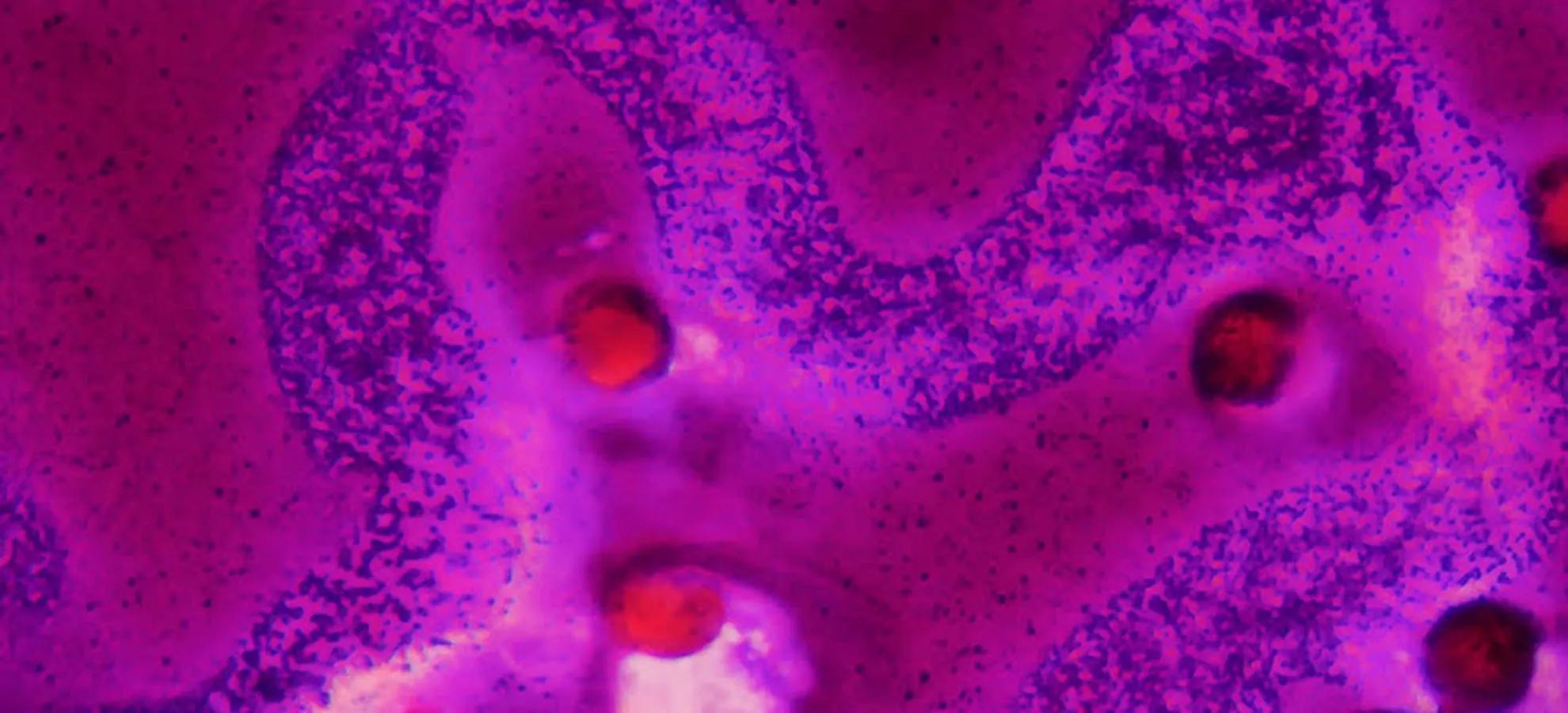Going big with nanoparticle technology in coronary artery disease
Engineering drug delivery with nanoparticle technology in coronary artery disease

One of the first programs at Verily, back when it was still a part of Google X, was our nanoparticle program. At the time, we wanted to see whether nanoparticles could be designed to find and attach to particular types of cells and to be detected and measured by a body-worn device once the nanoparticles found their targets. We, like many others in the field, feel that in addition to diagnostic applications, nanoparticle technology could play a significant role in developing precise and targeted therapeutic interventions. Theoretically, nanoparticles can be engineered to deliver specific therapies to individual cells or tissues. This research exists at the nexus of biology and engineering, which is the underpinning of Verily’s work.
Despite working with a cross-functional and dedicated team, nanoparticle irreproducibility was an ongoing problem for us, just as it is for many others engaged in existing research. Many commercially available particles we worked with initially were insufficiently characterized and exhibited inconsistent properties. As a result, research on novel formulations is very difficult, and this is an essential reason why specifically-targeted nanoparticle therapies have yet to become a reality. While nanoparticle-based therapeutics exist, they only serve to alter the solubility, toxicity, or pharmacodynamics of a drug. None of the therapies on the market today live up to the ultimate promise of nanoparticles, which involves specific molecular targeting of a therapeutic payload.
Such a platform would allow us to not only identify promising therapeutic candidates, but also generate a considerable amount of data on novel nanoparticle formulations that will help us better understand their behavior and improve future design. This required us to go back to first principles. Our approach is supported by on-site capabilities that include lab automation expertise, chemical engineering, microfluidics and chip design, DNA sequencing, and computational biology.
OUR APPROACH
Verily’s program is focused on lipid-based nanoparticles (LNPs and liposomes), the most widely used nanocarriers for drug delivery. LNPs are flexible, allowing for attachment of targeting groups such as antibodies or peptides to their surface, and amenable to a diversity of payloads, including nucleic acids. When properly designed, LNPs can deliver their therapeutic payload into a cell, which requires it to fuse with the cell membrane, and avoids cell degradation.
We’ve built an automated high throughput platform that allows us to synthesize nanoparticle libraries using a combinatorial chemistry approach, mixing different combinations and ratios of a specific set of chemical components to generate large numbers of unique formulations. We have also invested in and optimized instrumentation for in-depth, high throughput characterization and data capture on all of the particles we produce to develop a clear picture of the physical characteristics and chemical composition of the particles (i.e. size, charge, stability) and the impact they have on biological behaviors. This includes assessing binding to specific cell types, toxicity, tissue penetration, and so on.
In addition to this high throughput in vitro screening, we have developed a proprietary method of “barcoding” unique particle formulations to conduct in vivo studies in what we anticipate will be a faster and more efficient manner. Currently, particles are tracked in vivo largely using fluorescence, making it challenging to study more than one at a time. By embedding unique DNA “barcodes” in the particles, we can track them with precision in vivo using DNA sequencing. This means we should be able to study many unique formulations in a single in vivo model, tracking each formulation’s location and stability independently. We are just beginning this work of assessing the biology of formulations in vivo.
By gathering all of this information on the chemistry, the physical characteristics, in vitro assay results, and in vivo study results, we are building a data analysis pipeline to more efficiently design and synthesize particles in the future.
OUR WORK WITH VERVE THERAPEUTICS
Today, we’re announcing Verily’s first industry collaboration to leverage our unique nanoparticle research and development platform, with Verve Therapeutics. Verve is a next-generation cardiovascular company focused on applying genetic analysis and gene editing technology to develop a promising new therapeutic approach to treat coronary artery disease, the most common form of heart disease and the leading cause of death worldwide. Verily will partner with Verve to develop and optimize new gene editing delivery vehicles.
We are thrilled to be applying our technology to a major health effort in partnership with a world-class team of experts in cardiovascular medicine and gene editing delivery technology. There is much work for us to do and much for us to learn, and we’re excited about the road ahead.